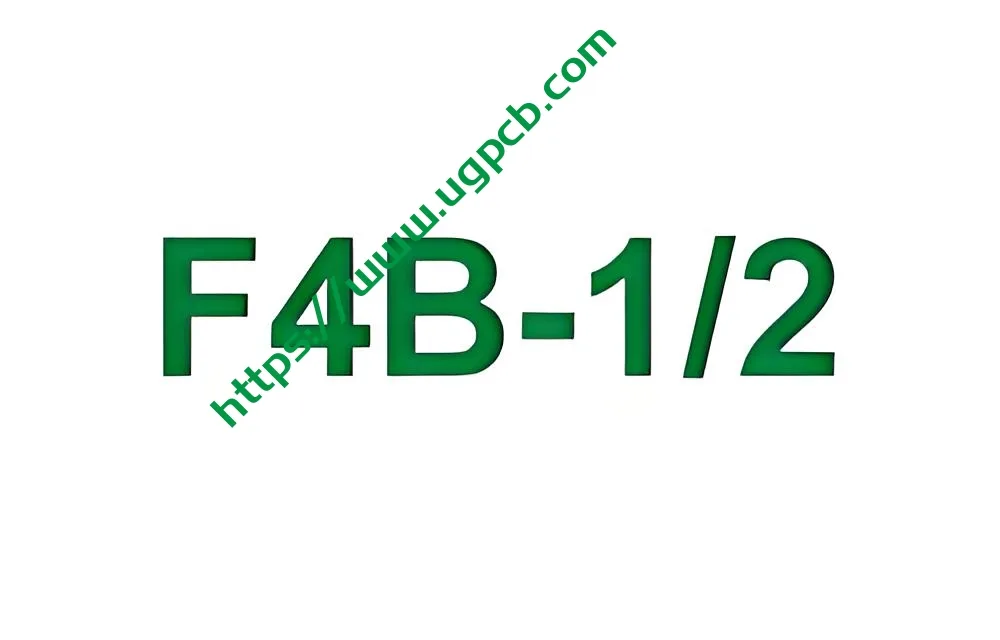F4B-1/2 Teflon-PCB-Glasstoff-Stoffkupferlaminate
F4B-1/2 Teflon-PCB-Gla-Stoffkupferlaminate sind so konzipiert, dass sie die strengen elektrischen Leistungsanforderungen von Mikrowellenschaltungen erfüllen. Diese Laminate sind aufgrund ihrer hervorragenden elektrischen Eigenschaften und einer verbesserten mechanischen Festigkeit hervorgehoben, sie ideal für Mikrowellen -PCB -Anwendungen.
Technische Spezifikationen
Aussehen
Das Erscheinungsbild dieser Laminate erfüllt die Spezifikationsanforderungen, die nach nationalen und militärischen Standards für Mikrowellen -PCB -Laminate festgelegt wurden.
Typen
- F4B255
- F4B265
Dielektrizitätskonstante
- 2.55
- 2.65
Verfügbare Abmessungen (mm)
- 300×250, 380×350, 440×550, 500×500, 460×610, 600×500
- 840×840, 1200×1000, 1500×1000
- Benutzerdefinierte Dimensionen sind auf Anfrage erhältlich.
Kupferdicke
- 0.035μm, 0.018μm
Dicke und Toleranz (mm)
| Laminatdicke | Toleranz |
|---|---|
| 0.17, 0.25 | ± 0,025 |
| 0.5, 0.8, 1.0 | ± 0,05 |
| 1.5, 2.0 | ± 0,05 |
| 3.0, 4.0, 5.0 | ± 0,09 |
Die Laminatdicke umfasst die Kupferdicke. Benutzerdefinierte Dimensionen sind auf Anfrage erhältlich.
Mechanische Stärke
| Dicke (mm) | Maximale Warp | Einzelseite | Doppelseite |
|---|---|---|---|
| 0.25~ 0,5 | 0.030 | 0.050 | 0.025 |
| 0.8~ 1.0 | 0.025 | 0.030 | 0.020 |
| 1.5~ 2.0 | 0.020 | 0.025 | 0.015 |
| 3.0~ 5.0 | 0.015 | 0.020 | 0.010 |
Kraft schneiden/Stanzstärke:
- Dicke ≤ 1 mm: Keine Grat nach dem Schneiden, Der minimale Platz zwischen Stanzlöchern beträgt 0,55 mm, Keine Delaminierung.
- Dicke >1mm: Keine Grat nach dem Schneiden, Der minimale Platz zwischen Stanzlöchern beträgt 1,10 mm, Keine Delaminierung.
Schalenstärke (1Oz Kupfer)
- Normaler Zustand: ≥ 15n/cm; Keine Blasen oder Delaminierung.
- Nach der Exposition gegenüber konstanter Luftfeuchtigkeit und Temperatur: Schalenstärke ≥ 12n/cm (Nach dem Schmelzen von Löttern bei 260 ° C ± 2 ° C für 20 Sekunden).
Chemische Eigenschaften
Diese Laminate können chemisch mit Standard -PCB -Methoden chemisch geätzt werden, ohne ihre dielektrischen Eigenschaften zu ändern. Durch die Durchbeschichtung durch Löcher ist möglich, erfordert jedoch eine Natriumbehandlung oder Plasmabehandlung.
Elektrische Eigenschaften
| Name | Testbedingung | Einheit | Wert |
|---|---|---|---|
| Dichte | Normaler Zustand | g/cm³ | 2.2~ 2.3 |
| Feuchtigkeitsabsorption | Eintauchen in destilliertes Wasser 20 ± 2 ° C für 24 Std. | % | ≤ 0,1 |
| Betriebstemperatur | High-Low-Temperaturkammer | °C | -50~+260 |
| Wärmeleitfähigkeit | W/m/k | 0.3 | |
| CTE (typisch) | 0~ 100 ° C. | ppm/° C. | X:16, y:21 z:186 |
| Schrumpfungsfaktor | 2 Stunden im kochenden Wasser | % | ≤ 0.0002 |
| Oberflächenwiderstand | 500In DC, Normaler Zustand | M; Oh | ≥1*10⁴ |
| Konstante Luftfeuchtigkeit und Temperatur | ≥5*10³ | ||
| Volumenwiderstand | Normaler Zustand | Mω.cm | ≥1*10⁶ |
| Konstante Luftfeuchtigkeit und Temperatur | ≥9*10⁴ | ||
| Stiftwiderstand | 500VDC, Normaler Zustand | Mω | ≥5*10⁴ |
| Konstante Luftfeuchtigkeit und Temperatur | ≥5*102 | ||
| Oberflächendielektriefestigkeit | Normaler Zustand, d = 1mm (KV/mm) | ≥ 1,2 | |
| Konstante Luftfeuchtigkeit und Temperatur | ≥ 1,1 | ||
| Dielektrizitätskonstante | 10GHz, | εr | 2.55/2.65 (± 2%) |
| Dissipationsfaktor | 10GHz, | Tgside | ≤ 1*10⁻³ |

